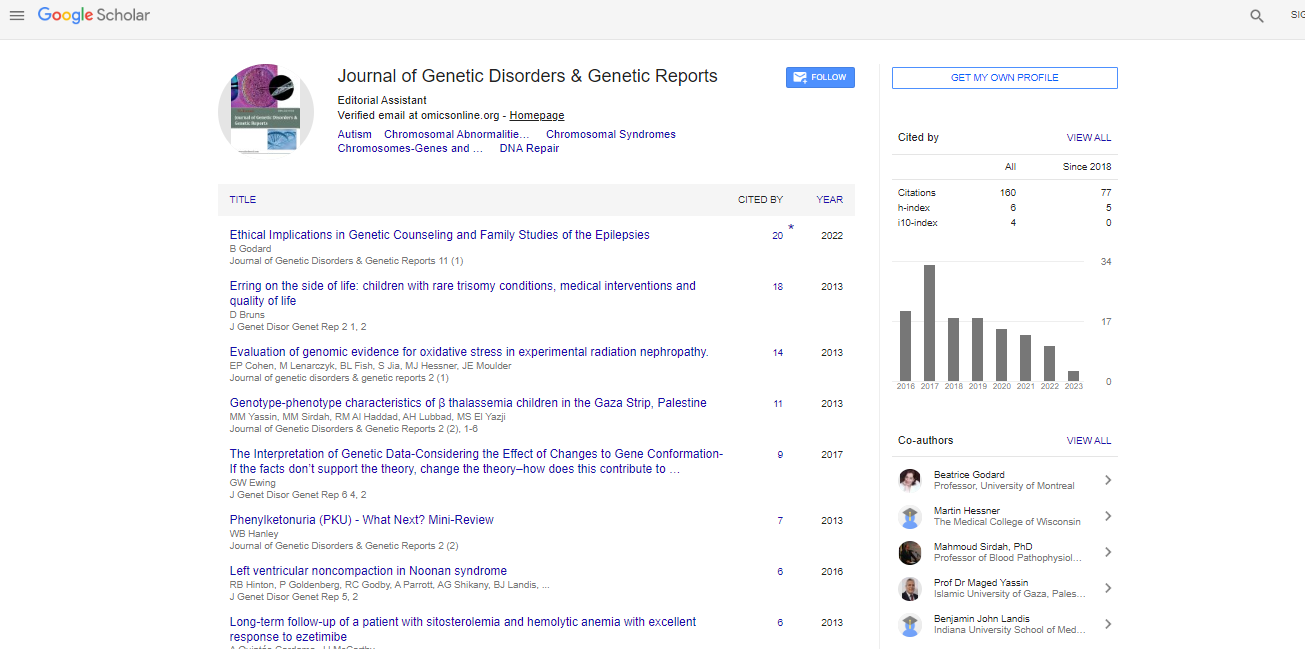Research Article, J Genet Disor Genet Rep Vol: 4 Issue: 1
Fetuin A Concentration in the Amniotic Fluid of Fetuses with Down Syndrome
| Salih Burcin Kavak1*, Ebru Celik Kavak2, Askin Sen3, Rasit Ilhan1, Murat Kaya4, Ekrem Sapmaz1, Ozgur Arat1, Selçuk Kaplan1 and Melike Baspinar1 | |
| 1Department of Obstetrics and Gynecology, F├?┬▒rat University, School of Medicine, F├?┬▒rat Medical Center, Elaz├?┬▒g, Turkey | |
| 2Department of Obstetrics and Gynecology, Special Medical Park Hospital, Elaz├?┬▒g, Turkey | |
| 3Department of Medical Genetics, F├?┬▒rat University, School of Medicine, F├?┬▒rat Medical Center, Elaz├?┬▒g, Turkey | |
| 4Department of Biochemistry, Special in vitro lab, Elaz├?┬▒g, Turkey | |
| Corresponding author : Salih Burcin KAVAK, MD Assistant Professor, Department of Obstetrics and Gynecology, Firat University, School of Medicine, Firat Medical Center, 23100, Elazig, Turkey Tel: +90 424 233 35 55-2124; Fax: +904242379138 E-mail: burcinkavak@gmail.com |
|
| Received: December 11, 2014 Accepted: December 30, 2014 Published: January 01, 2015 | |
| Citation: Kavak SB, Kavak EC, Sen A, Ilhan R, Kaya M, et al. (2015) Fetuin A Concentration in the Amniotic Fluid of Fetuses with Down Syndrome. J Genet Disor Genet Rep 4:1. doi:10.4172/2327-5790.1000118 |
Abstract
Fetuin A Concentration in the Amniotic Fluid of Fetuses with Down Syndrome
Background: Fetuin-A is a plasma protein called Alfa 2- Heremans Schmid glycoprotein. During the fetal life, it is the major component of non-collagenous bone matrix. The aim of this study was to examine the probable variation of Fetuin A which is produced by the fetal liver and trophoblastic tissue and found in abundance in the amniotic fluid Methods: Twenty cases in which amniocentesis were performed were included in the study between December 2012 and December 2013. Amniotic fluid samples were collected from women who underwent amniocentesis in the second trimester of pregnancy. Conventional cytogenetic culture was performed and ten fetuses with Down Syndrome (DS) were identified. They were classified as Group 1 and ten fetuses with normal karyotype were classified as Group 2. Levels of FetuinA in the amniotic fluid were measured in each group. Results: Age, gender, gestational age, obstetrics history and body mass index of the cases in Group 1 and Group 2 were similar. Mean amnion fluid Fetuin-A levels in Group 1 was 3.5 ± 0.4 ng/mL and these values were detected to be 4.7 ± 0.7 ng/mL in Group 2. There was statistically significant difference between the mean amniotic fluid Fetuin-A levels of two groups. (P=0.001 from the Mann-Whitney U test). Conclusion: In the present study, amnion fluid Fetuin-A levels were found to be significantly lower in the presence of DS. Decreased Fetuin-A levels may be effective on antenatal and postnatal developments of fetuses with DS. By the clarification of its importance treatment modalities may be developed.
 Spanish
Spanish  Chinese
Chinese  Russian
Russian  German
German  French
French  Japanese
Japanese  Portuguese
Portuguese  Hindi
Hindi 



